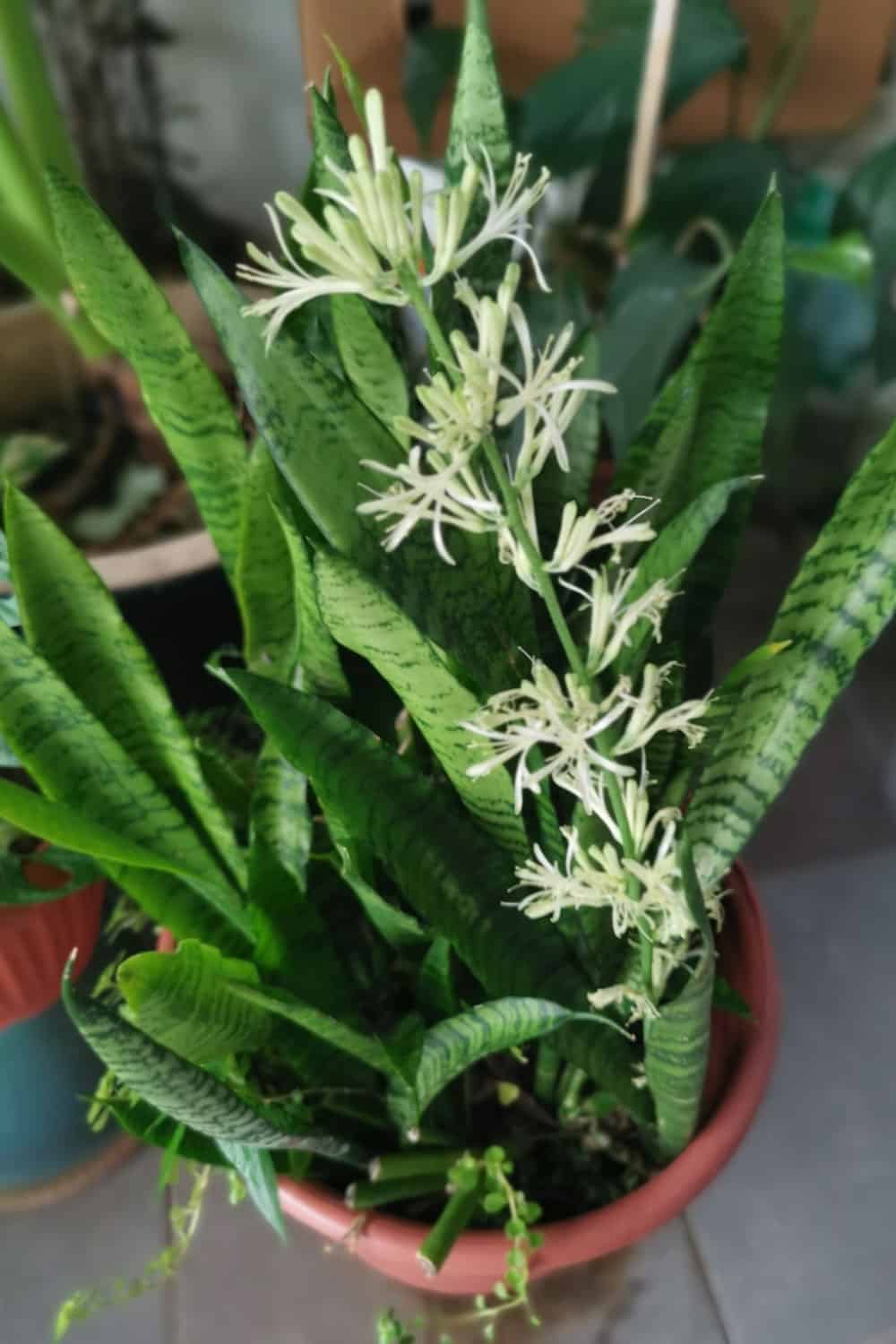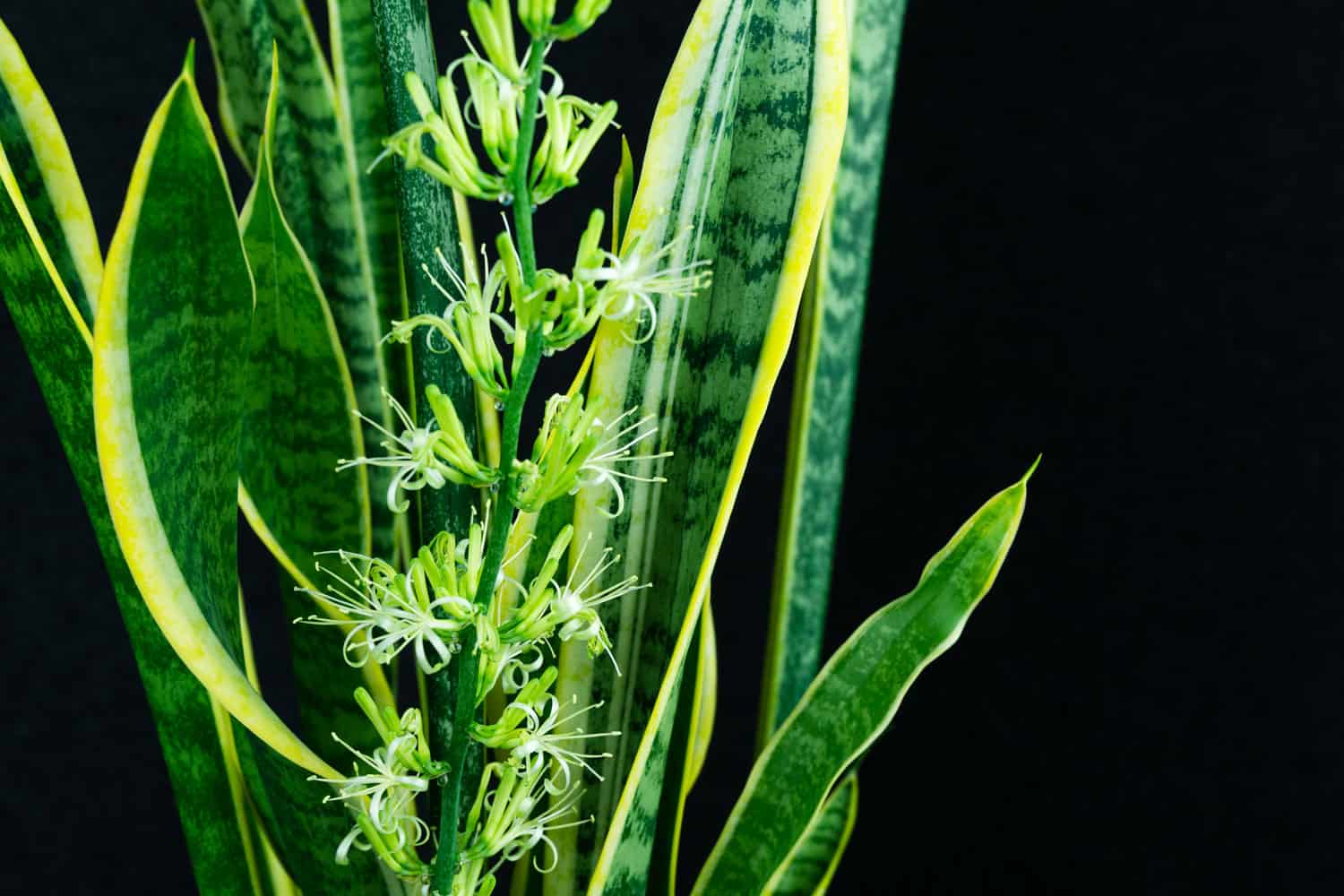You've probably heard snake plants are easy to care for, but did you know they can also bloom?
Yes, it's true! Snake plants, also known as mother-in-law's tongues, can produce delicate flowers that are both beautiful and fragrant.
You may wonder what to do next if you're lucky enough to have a flowering snake plant.

Curious about what to do when your snake plant starts flowering? Here are some tips to guide you:
- Check your watering schedule
- Provide proper lighting and temperature
- Ensure fertilizing, if needed
- Consider repotting
Keep scrolling for more insights!
The Joy of Flowering Snake Plants
Your snake plant is blooming, and you're one of the lucky few to witness this rare event. The appearance of flowers on your snake plant is an exciting and rewarding experience for any plant lover.

Here are some things you can do to celebrate and care for your flowering Snake Plant:
Admire the Flowers
Take a moment to relish the charm of your snake plant's blooms, typically in hues of white or cream, exuding a delightful scent.
Provide the Right Environment
Foster a conducive ambiance for your snake plant to flourish. Position it in a well-illuminated spot, shunning direct sunlight.
Water judiciously, letting the soil dry thoroughly before the next watering, and ensure the pot has ample drainage to avert water logs around the roots.
Enjoy the Benefits
Revel in the air-purifying attributes of snake plants, with the flowering ones no exception. Their blooms help release oxygen and reduce toxic absorption, marking them valuable additions to homes or offices.
What Does Flowering Mean for Your Snake Plant
Blossoming Maturity
Mature snake plants may grace you with delicate blossoms come late winter or early spring, extending on three-foot stems.
Mature snake plants are characterized by larger, sturdier leaves and a well-established root system. This maturity is a critical factor in their ability to produce flowers.
Response to Stress
In some cases, flowering can be a stress response.
Plants, including snake plants, might produce flowers as a survival mechanism when subjected to specific stressors, such as inconsistent watering, extreme temperature changes, or inadequate nutrients.
This adaptation allows them to reproduce before potentially unfavorable conditions affect their health.
Opportunity for Propagation
The flowering period might present an opportunity for propagation. The flowers of snake plants may produce seeds that can be collected and sown to grow new plants.
This is a fascinating way to expand your collection and share the beauty of snake plants with others.
Immediate Steps When Your Snake Plant Flowers
Here are some immediate steps to ensure your plant stays healthy and continues blooming.
Proper Watering
Ensuring the soil is moist but not waterlogged when your snake plants flowers is vital. Overwatering can lead to root rot, which can be fatal to your plant.
Check the soil regularly and water only when the top inch of soil is dry. Be sure to water thoroughly, allowing the water to drain out of the bottom of the pot.
Light Requirements
Snake plants are tolerant of a wide range of lighting conditions, but they do prefer bright, indirect light. When your plant is flowering, it is essential to ensure it is getting enough light to continue blooming.
If your plant is not receiving enough light, it may stop flowering. Move your plant to a brighter location if necessary.
Temperature Control
Snake plants prefer temperatures between 65 and 80 degrees Fahrenheit.
When your plant is flowering, it is essential to ensure it is not exposed to extreme temperatures, which can cause the flowers to wilt and fall off.
Keep your plant away from drafts and direct sunlight, which can cause the plant to overheat.
Long-Term Care for Flowering Snake Plants
What should you do now? Here are some tips for long-term care to ensure your plant stays healthy and produces stunning flowers.
Fertilizer Needs
Snake plants don't require a lot of fertilizer, but they benefit from occasional feedings.
During the growing season, typically spring and summer, you can fertilize your plant once a month with a balanced houseplant fertilizer.
Be sure to follow the instructions on the package, as over-fertilizing can damage your plant.
If you want to boost your snake plant, you can use a slow-release fertilizer.
These fertilizers release nutrients over time, so you don't have to worry about over-fertilizing. Just be sure to choose a fertilizer that's appropriate for snake plants.
Repotting Considerations
Snake plants don't need to be repotted often, but if your plant has outgrown its pot, it's time to repot. The best time to repot a snake plant is in the spring, just before the growing season begins.
When repotting your snake plant, choose a pot slightly larger than the current one.
Snake plants prefer to be slightly root-bound, so don't give them too much space. Use a well-draining potting mix, and water your plant thoroughly after repotting.
Common Concerns and Solutions
Flowering snake plants are a spectacle, yet might evoke care concerns. Fear not; here are simplified solutions to some hitches:
Drooping Flowers
One common concern when snake plants flower is that the flowers may droop.
This can happen because the flowers are heavy, and the stem may not be able to support them. To help prevent drooping, you can try the following:
- Stake the stem: Use a small stake to support the stem and keep the flowers from drooping.
- Provide support: You can also use a small trellis or support system to help keep the stem upright.
- Reduce water: Overwatering can cause the stem to weaken, so make sure to water your snake plant appropriately.
Stunted Growth
Another concern when snake plants flower is that the growth may become stunted. This can happen because the plant puts all its energy into producing flowers instead of growing new leaves.
To help prevent stunted growth, you can try the following:
- Fertilize: Use a balanced fertilizer to help provide nutrients that the plant needs to continue growing.
- Provide proper lighting: Ensure your snake plant gets enough light to grow. If it is not getting enough light, it may focus more on producing flowers than growing new leaves.
- Water appropriately: Overwatering or underwatering can cause stunted growth, so water your snake plant properly.
Enjoying Your Flowering Snake Plant
Remember that snake plant flowers are rare; enjoy them while they last. Once the flowers have faded, you can remove the flower stalks and continue to care for your plant as usual.
Snake plants are relatively easy to care for and can add a touch of natural beauty to any indoor space.
Enjoy your flowering snake plant and continue to care for it properly to ensure it remains healthy and happy.


I had snake plants for years & now one of mine is finally blooming. I do keep it on the window seal where it gets the morning sun & it seems to loke it there. I water it about every 10 to 14 days only. Love the snake plant!